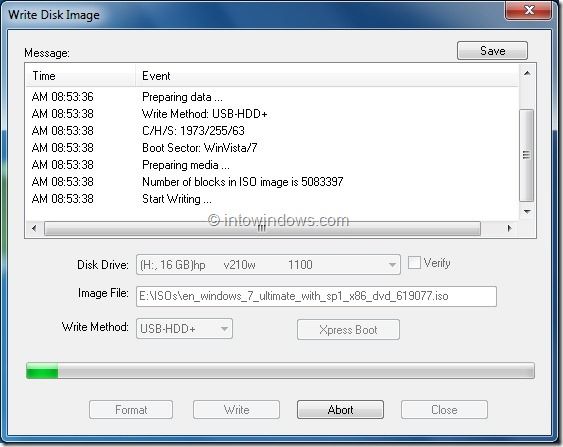

- #CREATE MAC BOOTABLE USB FROM WINDOWS 7 ULTRAISO WINDOWS 10#
- #CREATE MAC BOOTABLE USB FROM WINDOWS 7 ULTRAISO SOFTWARE#
- #CREATE MAC BOOTABLE USB FROM WINDOWS 7 ULTRAISO CODE#
So there's a good chance most Linux distros won't work if you're using exFAT. Without this, you may boot the kernel, but the whole process will probably fail along the way, if it is designed only to look for FAT32 content.

#CREATE MAC BOOTABLE USB FROM WINDOWS 7 ULTRAISO CODE#
It's not because you might be able to get a first stage to boot through exFAT, which is the only part where Rufus can intervene, that you will get anywhere.įor instance, Linux distros must have special boot code in their later boot stage to be able to boot from FAT32. The boot process is a multi stage affair, which is A LOT more complex than people imagine. Instead I would suggest that you use the Alt- E cheat mode to enable dual BIOS+UEFI (which should allow you to use FAT32 for Windows installation, and therefore allow R/W on Mac), or use UltraISO if you really MUST deal with Windows bootable media and use exFAT.Īs almost no ISO's support booting from exFAT
#CREATE MAC BOOTABLE USB FROM WINDOWS 7 ULTRAISO WINDOWS 10#
Besides, considering that a decent USB 3.0 drive should only set you back 3 minutes on Windows 10 boot drive creation in Rufus, reformatting a single flash drive for boot or file transfer isn't that big a deal (and may also prevent you from inadvertently lift confidential work data which you don't need, and which your company may not be too happy to see being copied by an employee).Īll in all, I don't see much of a case to justify adding exFAT support specifically for Windows installation media in Rufus. Surely, you can reformat the drive to exFAT if you need to transfer files after you're done with creating bootable media for work, and I would also expect you to have a dedicated USB drive at work for OS installation if you are being tasked with performing those (I doubt a workplace would be so cheap as to refuse the purchase of a flash drive, especially if it's related to performing OS installs, and I would strongly encourage you to use a different flash drive if you must copy files to or from work). I also find it a bit strange that you must use a bootable drive created by Rufus to transfer files between home and work. I just don't see enough people who would benefit from that feature compared to the amount of time it would take me to add and, more importantly, support it in Rufus.

On the other hand, Rufus also supports Linux, DOS, UEFI and other boot modes, so adding exFAT just for Windows images, and just to satisfy the very few people who will want to use their bootable drive between a Mac and a PC (and MUST have a >4GB file to justify not being able to use FAT32) seems like a waste of development time, to be brutally honest. Also, I'd be very surprised if that exFAT drive boots in UEFI mode. So that's probably why it might be easier to make it work with exFAT.
#CREATE MAC BOOTABLE USB FROM WINDOWS 7 ULTRAISO SOFTWARE#
This software currently only support Windows bootable disk, can work with both BOOTMGR and NTLDR boot mode


 0 kommentar(er)
0 kommentar(er)
